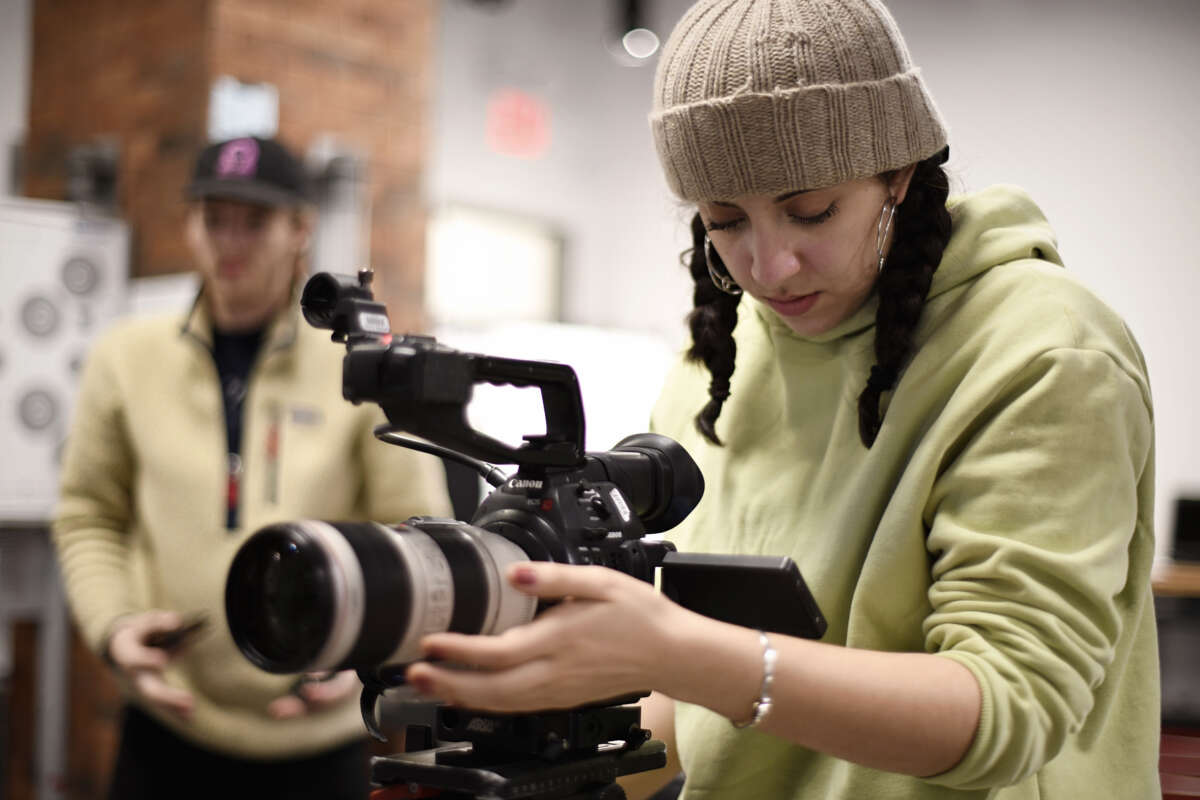Paul Reeve, former CEO of Into Film, reflects on the potential role of film and digital media in the curriculum in response to CLA’s manifesto asks – which propose the inclusion of film within the Expressive Arts curriculum area.
Early on in my time at educational charity Into Film, I was talking with a group of sixth formers who had formed their own film club. At one point in our animated discussion of favourite films and filmmakers I used the word “artform.” This elicited an expression of surprise on one student’s face. “I’ve never thought of film as being an artform before” he said. The group concurred. For me, this typified the challenge that both the medium and my organisation faced. Here were young people who shared a passion for film, yet even they hadn’t considered it an artform.
I’d defy anyone to argue that great films are not works of art (insert your own examples here!); that great filmmakers shouldn’t stand shoulder to shoulder with great playwrights, composers, choreographers and visual artists who have enthralled, enlightened and enabled us to see the world differently. Indeed, I’d suggest that film is one of the most important and influential artforms of the last hundred years, helping to shape cultures across the world.
It’s also one of the most accessible; almost all children and young people will have seen films and other stories told on screen, so will have some familiarity with the way they tell their stories. Similarly, with sophisticated movie cameras now being in our pockets, many young people have experience, however basic, of being creative screen storytellers. But are these things a double-edged sword? Is part of film’s artistic and educational image problem its ubiquity and popularity?
The words “film” or “moving image” don’t appear in England’s National Curriculum and in a somewhat discouraging meeting I had with a former Schools Minister he categorically stated that “there’s no place for film in the classroom.” At least we knew where we stood! In contrast, the Scottish Curriculum for Excellence recognises films as texts and pilot projects are taking place to develop a Film and Screen curriculum that would establish filmmaking as an expressive arts subject. In Wales it already is: with Expressive Arts one of six Areas of Learning and Experience within its new Curriculum, Film and Digital media is named as a discipline alongside Art and Design, Dance, Drama and Music.
So I wholeheartedly endorse the call within the CLA’s new manifesto for England that, firstly, the Expressive Arts should be a statutory core curriculum area alongside other subject areas, as in other nations and, secondly, that the definition of Expressive Arts subjects should be expanded from Art and Design, Dance, Drama, and Music to include Digital Arts (including Film) and Craft.
A statement in the Curriculum for Wales particularly struck me: “Although each discipline has its own discrete body of knowledge and body of skills, it is recognised that together they share the creative process.”
This is a pertinent note for those of us working in the cultural sector as much as teachers. With arts funding, school budgets and timetables all becoming ever tighter over recent years, I sense that – for understandable reasons – we’ve focused increasingly on fighting for recognition of our individual artistic disciplines in the educational hierarchy and funding ecology. This hasn’t always been conducive to joined-up thinking or collaborative working with regard to both shared creative processes, and effective advocacy.
Including digital arts and film in a new definition of Expressive Arts can enrich the creative and artistic palette for teachers and pupils; I also hope it would aid the mixing and interaction of the individual colours. While film is an artform in and of itself, it draws on the others to tell its stories, and the same is true in reverse. Theatre, music, dance, opera and visual art increasingly deploy the moving image. 2018 Turner Prize winner Charlotte Prodger filmed her artwork on her iPhone.
I hope teachers would also positively embrace this expanded definition of the Expressive Arts. Many pupils’ familiarity with film – as both audiences and makers – provides a fantastic springboard from which to further develop their understanding, skills and creativity: to expand their cultural horizons and enable them to confidently tell their own stories on screen.
For some, this may ignite a spark that leads them along a vocational pathway – one that’s worth considering. Despite the recent short-term setbacks of writers’ strikes, the UK’s screen industries – from film and TV production to games – are burgeoning, and a major driver of our economy. New studios are being built across the country to address demand. Shortages in some skills areas are projected to increase in the future; there’s also a pressing need to develop a more diverse and inclusive workforce. So there’s another clear benefit here to embedding the seeds of skills and aspiration within a 21st century curriculum. And, with the moving image now a predominant form of global communication, the value of experience and skills in digital arts and film forming part of every child’s education wouldn’t be confined to screen industry careers; it’s difficult to name many sectors that aren’t using the screen to tell stories in some shape or form.
Egyptian filmmaker Jehane Noujaim said: “I don’t know whether a film can change the world, but I know the power of it – I know that it starts people thinking about how to change the world.” As part of a new curriculum within which Expressive Arts is integral, the prospect and potential of film playing a small part in fostering young people’s capacity to think about how to change the world is genuinely exciting.




